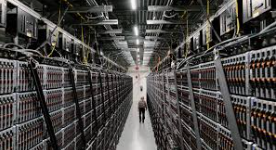India’s data-centre capacity has surpassed 1.5 gigawatts (GW) as of September 2025, with approximately 260 megawatts (MW) added in the first nine months of the year, reaffirming the country’s rapid digital infrastructure expansion.
A report from CBRE South Asia Pvt. Ltd. states that the city of Mumbai alone accounts for 53 % of the total capacity, making it the dominant hub for data-centre infrastructure in India.
Following Mumbai, other major nodes include Chennai at about 20 %, Delhi‑NCR at 10 %, and Bengaluru at 7 %, with these four regions collectively representing nearly 90 % of the national total.
Key drivers behind this surge include:
- Robust demand from cloud, AI and Internet-of-Things (IoT) workloads, driving enterprises to expand data-centre footprint.
- Government-led policy support (such as data-localisation norms) plus favourable economics in power and real-estate costs compared with global peers.
- Large capital commitments of around US$94 billion since 2019, including US$30 billion committed in Jan-Sep 2025 alone.
Mumbai’s leadership is attributed to its strategic advantage as a landing hub for submarine‐cable connectivity and global internet exchange points, making it a preferred location for hyperscale and enterprise data-centre deployments.
With this trajectory, India is increasingly seen as a key global data-centre destination—offering competitive cost structure, growing digital demand and policy tailwinds.
For infrastructure, technology or investment stakeholders, the landmark of crossing 1.5 GW signals a maturing market and the potential for further growth across mid-tier cities as supply evolves beyond the major hubs.





Leave A Comment